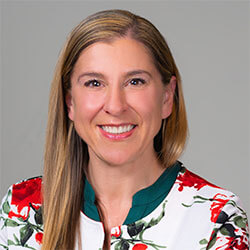
Global Workforce Representation
A diverse workforce is not an option or a checked box at Synchrony. It is a business imperative that drives real outcomes. Differences inspire innovation, and diverse teams bring a wider range of perspectives, experiences and ideas that help us deliver strong business and financial results. We work hard to continuously build and sustain an equitable, diverse and inclusive workforce—because our employees deserve to work and engage in ways that recognize and support their individuality.
SyNCHRony Global Representation
0Global Workforce Population
Global Workforce Population
- 0 U.S.
- 0 India
- 0 Philippines
Synchrony Level Descriptions
- LEVEL 15+ Senior and Executive Vice Presidents including direct reports to the CEO
- LEVEL 12-14 Vice Presidents including mid to upper-level professionals and managers
- LEVEL 10-11 Associate Vice Presidents including mid-level/career managers and professionals
- LEVEL 8-9 Entry and intermediate professionals including first-level managers
- LEVEL 4-7 Production and support employees including frontline associates
Percentages may not add up to 100% because of rounding
We take a data-informed approach to accelerate and sustain progress in becoming a more diverse workforce. We commit to the transparency of our data, accomplishments and opportunities by openly sharing our facts and learnings with our stakeholders and employees alike. In the following pages we share our workforce representation data as of December 31, 2023, unless otherwise noted.

The correlation between levels and diverse representation continues to be an opportunity. Compared to last year, women’s representation increased by 2% at our senior executive levels, 15+ globally.
SyNCHRony U.S. WORKFORCE REPRESENTATION
The Importance of Disaggregating Our Data
We understand it’s the analysis of data that is most meaningful. We take pride in conducting a comprehensive analysis of our current state, collecting both quantitative and qualitative data, identifying our most vital areas of opportunity, and confidently determining our go forward approach. Disaggregating our data enables us to illuminate any trends that demonstrate our progress and where we need to improve. This approach is essential to driving toward our North Star, it helps us ensure that no groups are marginalized and gives us ongoing opportunities to address the intersectionality of our workforce.


Synchrony Global | Self-ID
At Synchrony, we value the individuality our employees add to our workplace. We want our people to feel not only comfortable but also encouraged to bring their authentic selves to work and have confidence that they will be seen and valued—and that means creating environments that foster this feeling. It starts with our ability to deeply understand the distinct identities within our workforce, because the more we know, the more we can do to support our people.

That’s why each year, we invite our employees to confidentially disclose self-identification demographics (veteran or active-duty status, military spouse/family, disability and sexual orientation and gender identity/expression). In the past, we’ve promoted this through our annual Stand Up and Be Counted (SUBC) campaign.
Our focus has always been on raising awareness and educating employees about the importance of self-identification. While we are committed to doing this campaign every year, employees have the option of providing information at any time throughout the year. We also respect our people’s choice to not disclose this information, and we provide corresponding selections in our platform.
The aggregate results of self-identification are essential in our evolution to ensure inclusivity and enhance belonging every day. Our Equity, Diversity, Inclusion and Citizenship, and Diversity Network+ strategies are informed through Be Included, and we will continue to listen and act accordingly as our employees continue to share their voices.
Offering employees the opportunity to provide more information about who they are is essential to helping us better understand their experiences and enables us to provide support and continue to invest in ways that make Synchrony an employer of choice. We will continue to leverage that data to help shape our strategy and evaluate our progress toward our North Star aspiration of 95% participation.
- 84% of our workforce completed their Self-ID—up 13% from last year’s participation.
As of December 31, 2023 -
Of the 84% of employees that completed their Self-ID:
- 10% People with
disabilities - 4% LGBT+
- 4% Vets, spouses
and family
- 10% People with
Be Included
Asking employees to self-identify is not new to Synchrony. In 2023, we rebranded our campaign to, “Be Included.” We wanted to encourage all employees to participate, even if they do not identify with any of the self-identification options. We also wanted to move away from references to “counting” to avoid the possible misconception that our people are just numbers and sunset the terminology “stand up” to be more inclusive. Be Included broadens the work we have done since our inception to encourage participation and we’re proud of the direction we’re headed.
Beyond better understanding our organization through self-identification, statements in our Great Place to Work survey help us ensure we are inclusive.

“I believe in the power of numbers, knowledge and information. Knowing who makes up our employee population helps us better understand where our focus should be and allows us to create and customize programs that align to our employee base. For the Pride Network+, the decision to identify is a tricky one. Coming out is a personal decision, so I would never tell our Pride+ members they must participate. Rather, my message to everyone is that participation can result in positive changes for our company (and it’s completely confidential). So, if you’re comfortable identifying, please do...it makes a huge difference and is really important!”
Mike Mattevi
Synchrony Senior Vice
President, PayPal Credit (PPC)
General Manager
Pride Network+ Leader

“Opting in allows Synchrony to know that you’re there and if you have any special needs that the Veterans Network+ can help with. For a lot of vets, there tends to be a myth that if you were a vet, you must have deployed and must have had PTSD. That’s not necessarily the case. We want to eliminate barriers and help others easily connect with us.”
Jim Eubanks
Synchrony Senior Vice
President, Risk Testing
Veterans Network+ Leader

“Self-identification is not just an option, but a crucial step toward furthering inclusion. By self-identifying, we honor the diversity and experiences within our EnAbled+ community and demonstrate our commitment to creating a workplace where every individual feels valued and respected. Self-identification empowers people with disabilities to define themselves on their own terms, allowing them to bring their whole selves to work. It also enables us to advocate for the specific needs and accommodations that contribute to a more inclusive environment for all.”
Christine Kica
Synchrony Senior Vice President,
Marketing Innovation Leader
EnAbled+ Network+ Leader



